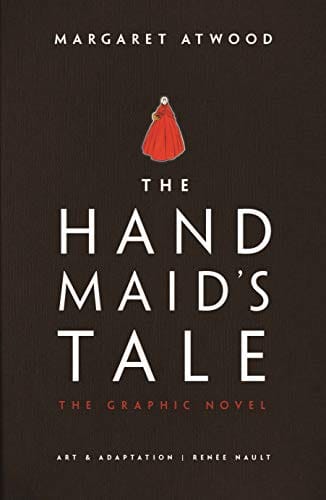The Handmaid’s Tale: Themes, Analysis, and Cultural Impact
Explore the plot, themes, characters, and cultural impact of Margaret Atwood’s The Handmaid’s Tale in this concise 800-word analysis.

Introduction to The Handmaid’s Tale
Since its publication in 1985, Margaret Atwood’s dystopian novel The Handmaid’s Tale has become an enduring classic of speculative fiction. The book, and the award-winning television adaptation that followed in 2017, portray the theocratic Republic of Gilead, where women’s rights are brutally curtailed and fertility becomes a political commodity. Both versions of the story resonate strongly with audiences today, raising urgent questions about power, gender, and resistance.
Plot Overview
The narrative centers on Offred, formerly known as June, who is forced into servitude as a "Handmaid," a woman whose sole function is to bear children for the ruling elite. Through Offred’s restricted perspective, readers witness flashbacks to the gradual collapse of American democratic institutions, the rise of ultraconservative forces, and the establishment of a regime that wields religion as a tool of control. The tale unfolds through Offred’s memories, inner monologue, and subtle acts of defiance, creating an atmosphere of claustrophobic tension that grips readers until the final ambiguous sentence.
Major Themes and Their Modern Relevance
Patriarchy and Control
Atwood’s depiction of a rigid patriarchal hierarchy remains chillingly plausible. In Gilead, women are reduced to their reproductive capacity, echoing real-world debates over bodily autonomy. By showing how incremental policy changes erode freedoms, the novel warns against complacency in the face of misogyny.
Religion and Politics
The regime’s scriptural justifications highlight the danger of conflating religious dogma with state power. Gilead cherry-picks biblical verses to legitimize oppression, illustrating how selective theology can be weaponized to shape public policy and enforce conformity.
Language as a Tool of Oppression
Gilead’s authorities manipulate language—banning reading for women, renaming individuals, and inventing ritualistic greetings—to limit thought itself. The controlled vocabulary diminishes dissent, underscoring the real-life importance of free expression in safeguarding democracy.
Resistance and Solidarity
Small rebellions, from whispered conversations to covert networks like Mayday, reveal that resistance often begins in small, collective acts. Offred’s story affirms the enduring human instinct to seek community and fight back, even under extreme repression.
Character Analysis
Offred is a complex protagonist whose contradictions make her relatable. She alternates between resignation and rebellion, hope and despair, reflecting the psychological toll of living under tyranny. The Commander embodies moral hypocrisy: outwardly pious, yet privately indulgent in forbidden pleasures. Serena Joy, once a vocal advocate for traditional roles, becomes trapped by the very system she helped create, illustrating how authoritarian structures eventually consume their architects.
Stylistic Devices and Narrative Structure
Atwood blends lyrical prose with stark, unsettling imagery. The nonlinear timeline, shifting between past and present, builds suspense while emphasizing how quickly normalcy can unravel. Symbolism—such as the crimson Handmaid uniforms and the forbidden territories of the Wall—deepens the narrative’s emotional impact.
Cultural Impact and Adaptations
The Hulu television series, starring Elisabeth Moss, expands the original story while remaining faithful to its core themes. Iconic scenes—Handmaids silently protesting in blood-red cloaks—have become potent symbols at real-world demonstrations for women’s rights. The phrase "Nolite te bastardes carborundorum," a fictional Latin motto for perseverance, now adorns protest signs, tattoos, and T-shirts worldwide, bridging fiction and activism.
Critical Reception and Awards
The Handmaid’s Tale has garnered critical acclaim, winning the 1985 Governor General’s Award and the first Arthur C. Clarke Award in 1987. The television adaptation has received multiple Emmy and Golden Globe Awards, demonstrating the story’s lasting resonance across media and generations.
Why The Handmaid’s Tale Still Matters in 2024
Rising global conversations about reproductive rights, surveillance technology, and authoritarian politics make Atwood’s cautionary tale feel increasingly prescient. The novel serves as a cultural touchstone that reminds readers to remain vigilant and proactive in defending civil liberties. Its continued popularity in classrooms and book clubs underscores its value as both literature and a sociopolitical warning.
Conclusion
The Handmaid’s Tale endures because it merges compelling storytelling with urgent social commentary. By examining themes of gender, power, and resistance through Offred’s personal lens, Margaret Atwood delivers a narrative that challenges readers to question complacency and advocate for a more equitable future. Whether encountered on the page or screen, the story remains a rallying cry for vigilance against oppressive ideologies.



